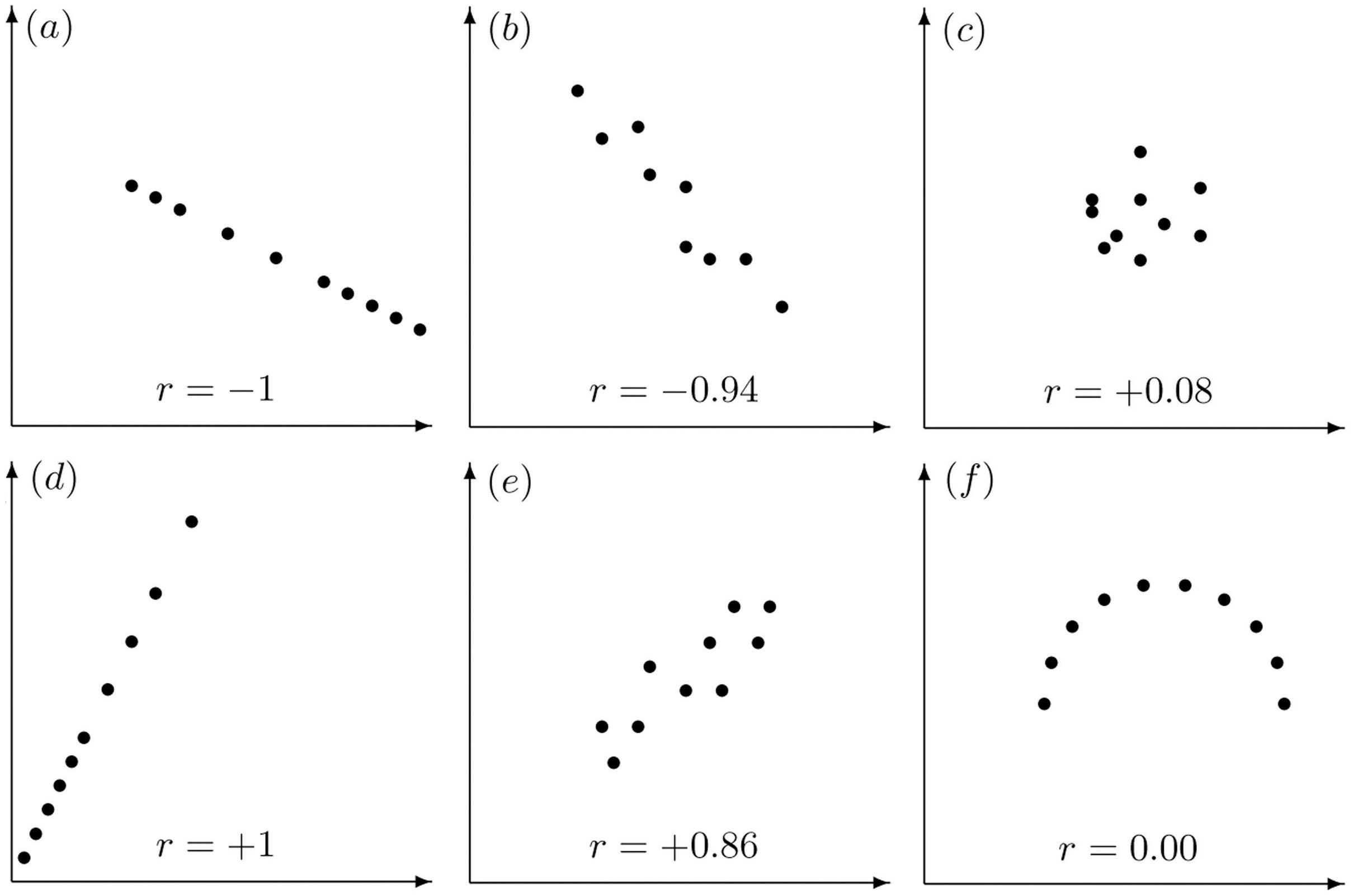10.2: The Linear Correlation Coefficient
- Page ID
- 543
To learn what the linear correlation coefficient is, how to compute it, and what it tells us about the relationship between two variables \(x\) and \(y\)
Figure \(\PageIndex{1}\) illustrates linear relationships between two variables \(x\) and \(y\) of varying strengths. It is visually apparent that in the situation in panel (a), \(x\) could serve as a useful predictor of \(y\), it would be less useful in the situation illustrated in panel (b), and in the situation of panel (c) the linear relationship is so weak as to be practically nonexistent. The linear correlation coefficient is a number computed directly from the data that measures the strength of the linear relationship between the two variables \(x\) and \(y\).

The linear correlation coefficient for a collection of \(n\) pairs \(x\) of numbers in a sample is the number \(r\) given by the formula
The linear correlation coefficient has the following properties, illustrated in Figure \(\PageIndex{2}\)
- The value of \(r\) lies between \(−1\) and \(1\), inclusive.
- The sign of \(r\) indicates the direction of the linear relationship between \(x\) and \(y\):
- The size of \(|r|\) indicates the strength of the linear relationship between \(x\) and \(y\):
- If \(|r|\) is near \(1\) (that is, if \(r\) is near either \(1\) or \(−1\)), then the linear relationship between \(x\) and \(y\) is strong.
- If \(|r|\) is near \(0\) (that is, if \(r\) is near \(0\) and of either sign). then the linear relationship between \(x\) and \(y\) is weak.
so that
\[ r= \dfrac{SS_{xy}}{\sqrt{SS_{xx}SS_{yy}}}=\dfrac{2.44.583}{\sqrt{(46.916)(1690.916)}}=0.868 \nonumber \]
The number quantifies what is visually apparent from Figure \(\PageIndex{2}\) weights tends to increase linearly with height (\(r\) is positive) and although the relationship is not perfect, it is reasonably strong (\(r\) is near \(1\)).

Compute the linear correlation coefficient for the height and weight pairs plotted in Figure \(\PageIndex{2}\).
Solution:
Even for small data sets like this one computations are too long to do completely by hand. In actual practice the data are entered into a calculator or computer and a statistics program is used. In order to clarify the meaning of the formulas we will display the data and related quantities in tabular form. For each
| \(x\) | \(y\) | \(x^2\) | \(y^2\) | |
|---|---|---|---|---|
| 68 | 151 | 4624 | 10268 | 22801 |
| 69 | 146 | 4761 | 10074 | 21316 |
| 70 | 157 | 4900 | 10990 | 24649 |
| 70 | 164 | 4900 | 11480 | 26896 |
| 71 | 171 | 5041 | 12141 | 29241 |
| 72 | 160 | 5184 | 11520 | 25600 |
| 72 | 163 | 5184 | 11736 | 26569 |
| 72 | 180 | 5184 | 12960 | 32400 |
| 73 | 170 | 5329 | 12410 | 28900 |
| 73 | 175 | 5329 | 12775 | 30625 |
| 74 | 178 | 5476 | 13172 | 31684 |
| 75 | 188 | 5625 | 14100 | 35344 |
| 859 | 2003 | 61537 | 143626 | 336025 |
- The linear correlation coefficient measures the strength and direction of the linear relationship between two variables \(x\) and \(y\).
- The sign of the linear correlation coefficient indicates the direction of the linear relationship between \(x\) and \(y\).
- When \(r\) is near \(1\) or \(−1\) the linear relationship is strong; when it is near \(0\) the linear relationship is weak.


